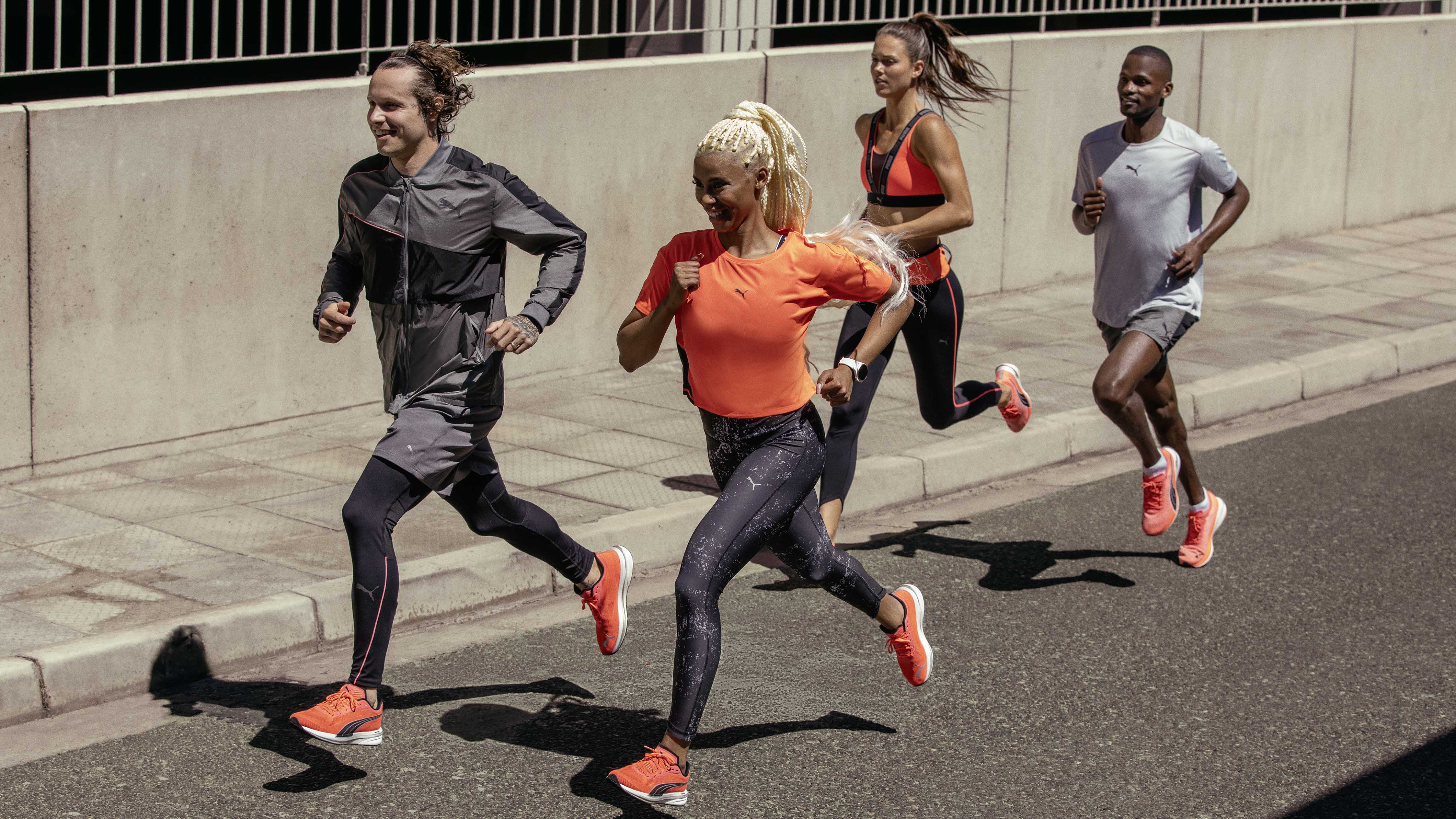
Max Langridge
Buying yourself a pair of the best running shoes is a decision not to be taken lightly. Easily the most important aspect of your full running gear ensemble, choosing the right pair is essential if you plan on racking up the kilometres on a daily basis.
With running shoe technology evolving and improving all the time, it can be hard to keep up with the latest developments, especially if you're new to running. But even if you're a marathon junkie, the sheer choice can we overwhelming, which is why we've gone to great strides to find the absolute best options and deals on running shoes in Australia.
All the runnings shoes in our list have been thoroughly tested to make sure we’re guaranteeing your feet a good time.
T3 can also help you dress up for winter and summer runs more appropriately too with recommendations for the best running shorts and best running tops.
Once you've found your perfect pair of shoes and get into your stride, you'll want to consider analysing your metrics using one of the best running watches or best heart rate monitors and to really supercharge your runs, you'll want to pump some music into your ears using any of the best running headphones.
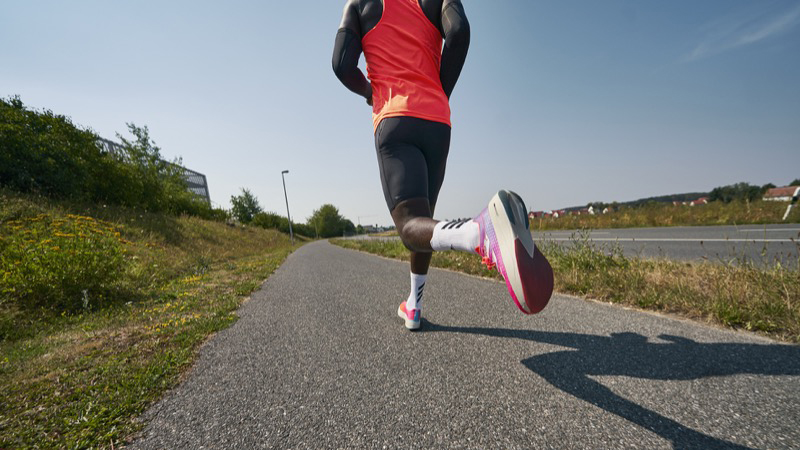
The best running shoes, in order of preference
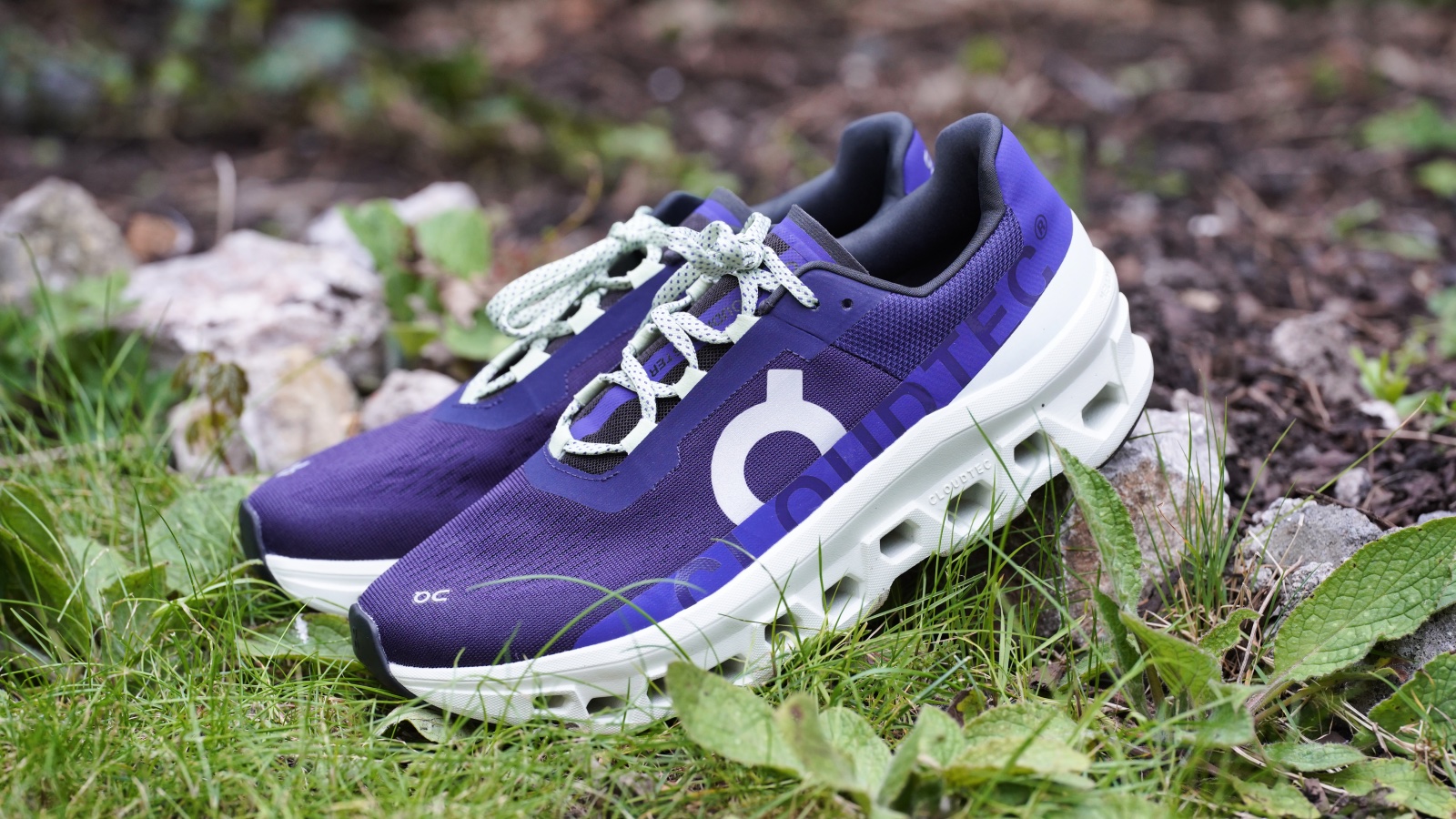

Specifications
Reasons to buy
Reasons to avoid
The On Cloudmonster is a max cushioned, neutral road running shoe designed to carry you in comfort over long distances. It features the highest concentration of On's Cloud technology ever integrated into one of its shoes, which is combined with the springy Speedboard, making the Cloudmonster an excellent choice for 10K+ runs.
Despite being the softest shoe On has to offer, the Cloudmonster isn't the softest running shoe; the CloudTec midsole is definitely firmer than Nike's ZoomX or Adidas' Boost technology. That said, the Cloudmonster is far from being uncomfortable, although we do feel the toe box could be roomier.
On takes a decidedly stylish approach to the look of its shoes, and we feel the Cloudmonster is rather easy on the eye. The colours and over-the-top lettering make the shoes stand out from the crowd, especially compared to brands such as Brooks Running (Brooks has some cool shoes, too, just have a look a the Brooks Aurora-BL).
The On Cloudmoster is recommended for runners who prefer a bit of firmness and need some hip trainers for long-distance runs. Let the monster go the extra mile for you.
Read our full On Cloudmoster review
Just how good of a running shoe is the Cloudmonster? Well, it sure won the Best Running shoes category at the T3 Awards 2022!
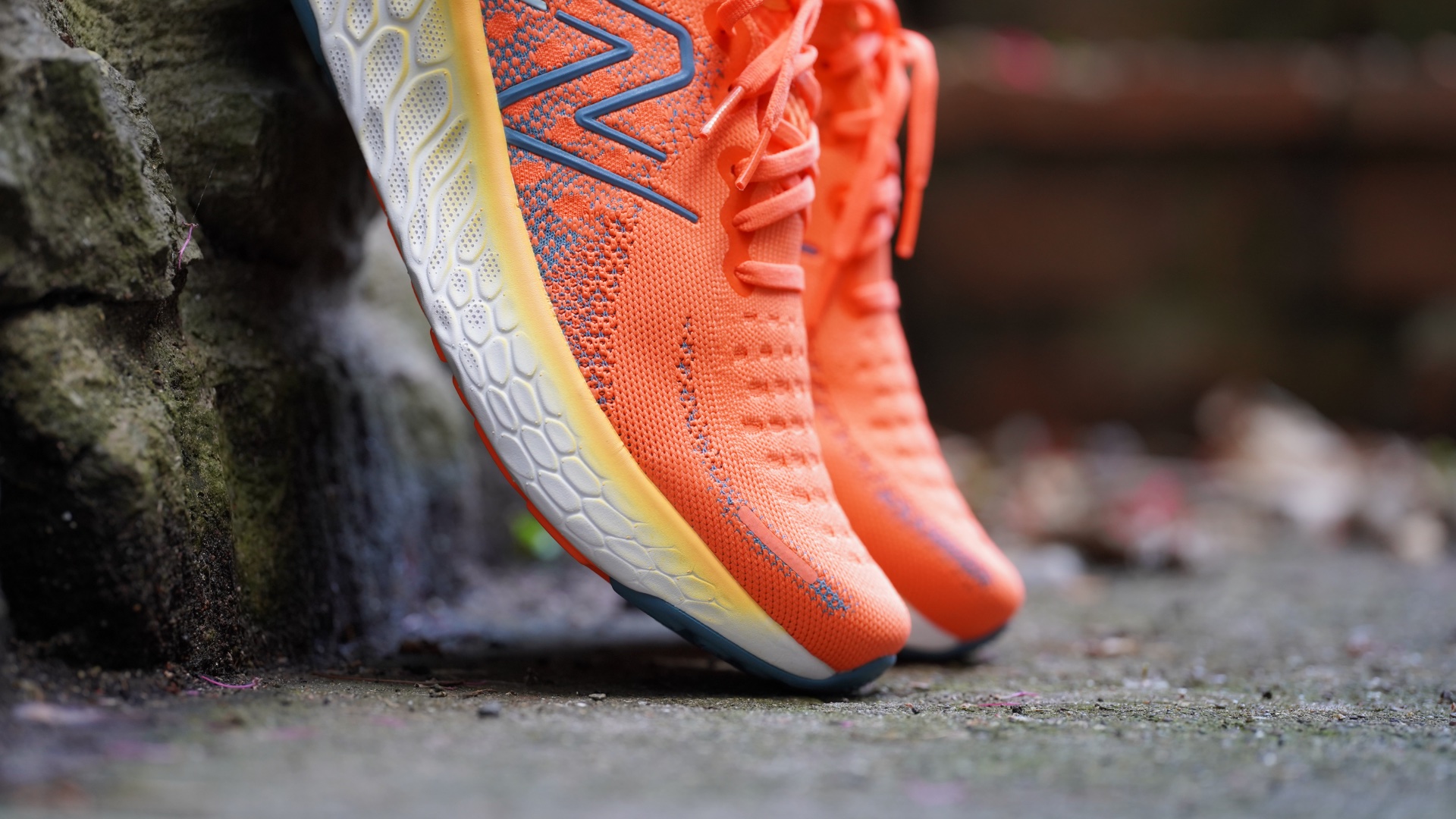
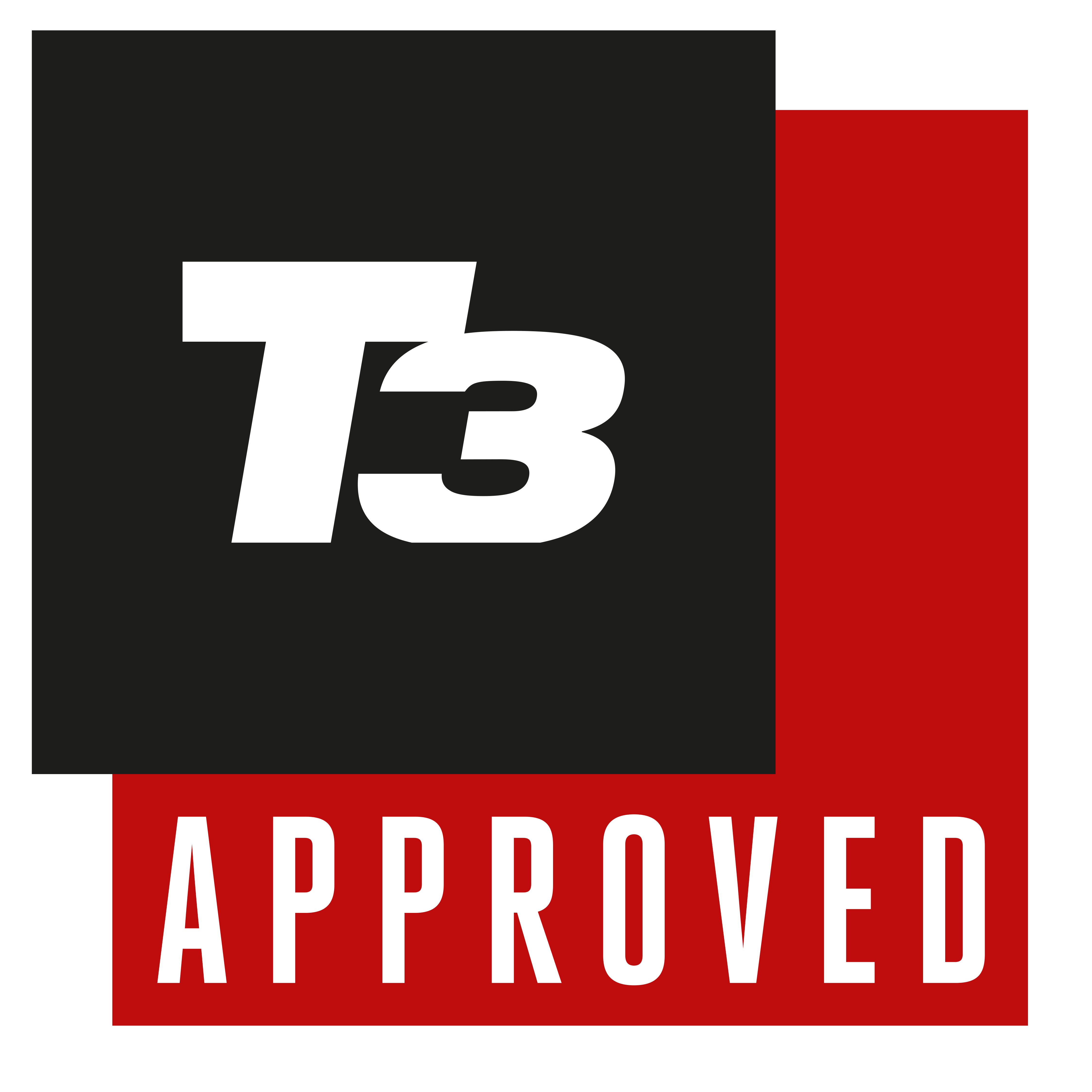
Specifications
Reasons to buy
Reasons to avoid
The New Balance Fresh Foam X 1080v12 surpasses its predecessor in every way and are now more comfortable, responsive and supportive than ever before.
The Fresh Foam X makes all the difference underfoot, being softer yet offering more control over your stride than the previous Fresh Foam technology; it's basically the best of both worlds.
The Hypoknit upper allows plenty of room in the toebox – a big win for people with wider feet – but we found it also offers plenty of support. Airflow in the shoes is also sublime – the Fresh Foam X 1080v12 not once felt stuffy or too warm, even when they were used for tempo runs on hot days.
But the icing on the cake? The New Balance Fresh Foam X looks sexy enough and feels comfortable enough for you to wear them for other things than just running. These are some versatile running shoes indeed.
Read our full New Balance Fresh Foam X 1080v12 review
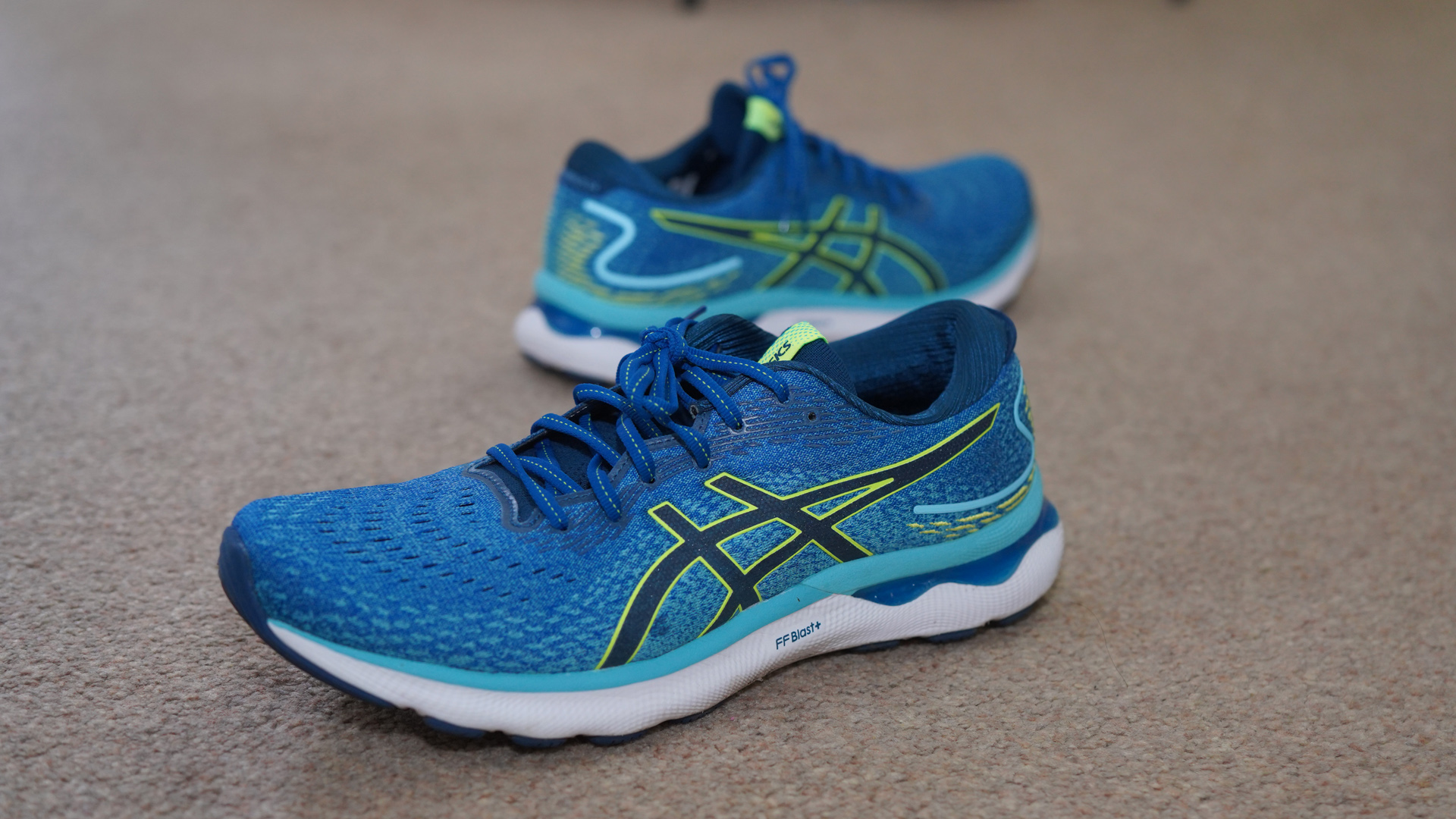

3. ASICS Gel-Nimbus 24
Our expert review:
Specifications
Reasons to buy
Reasons to avoid
The ASICS Gel-Nimbus 24 is a max-cushioned everyday running shoe for people who need something reliable and don't mind their footwear looking a bit clunky. These shoes are for pounding the pavement in comfort, clocking up the miles and building strong legs.
The combination of FF BLAST+ and FLYTEFOAM technologies, as well as rearfoot and forefoot Gel, make landings smooth and toe-offs energetic enough to keep you going mile after mile. The engineered mesh upper and Ortholite sock liner help to cradle your feet in absolute comfort.
The Gel-Nimbus 24 is slightly more expensive than its predecessor at RRP, but it's also a tad bit lighter (although some may still find them slightly heavy). Finally, ASICS also started using more sustainable materials in its shoes: the upper and the outsole of the Gel-Nimbus are now made of recycled materials (to some degree). Do yourself a favour and invest in the Gel-Nimbus 24; your feet will thank you for it.
Read our full ASICS Gel-Nimbus 24 review
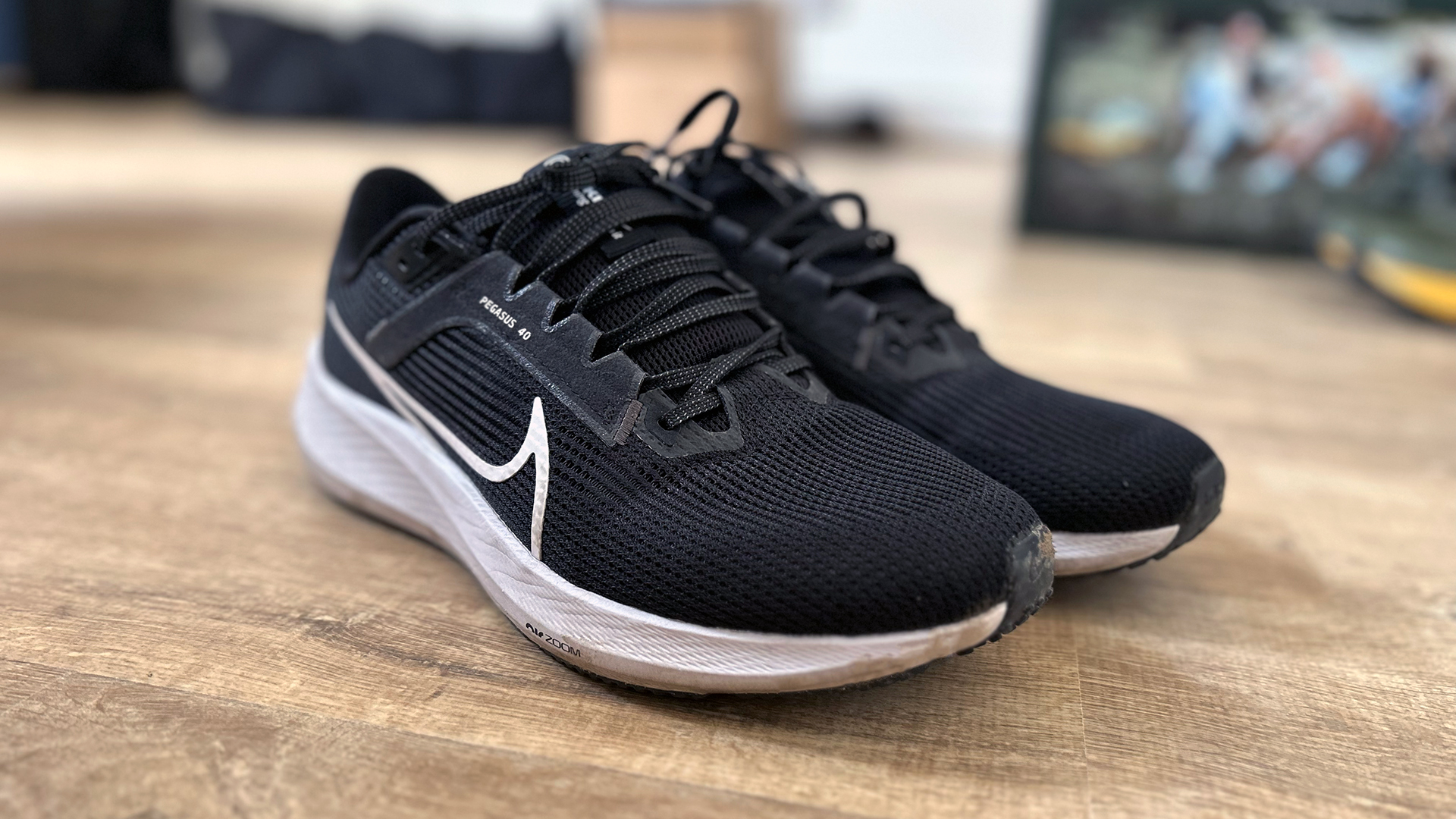

Specifications
Reasons to buy
Reasons to avoid
Nike's Pegasus range of running shoes has long been a favourite of regular tarmic chompers and the Nike Pegasus 40 continues the winning formula. It is a superb daily trainer for runners who don't mind their shoes looking fly.
Nike hasn't made any revolutionary changes here compared to the previous 39s, but updates to the fit and ergonomics make them the most comfortable iteration yet. Breathability has been improved thanks to a new upper, which is most welcome, but the overall running experience is largely unchanged, which is definitely a positive.
Read our full Nike Pegasus 40 review
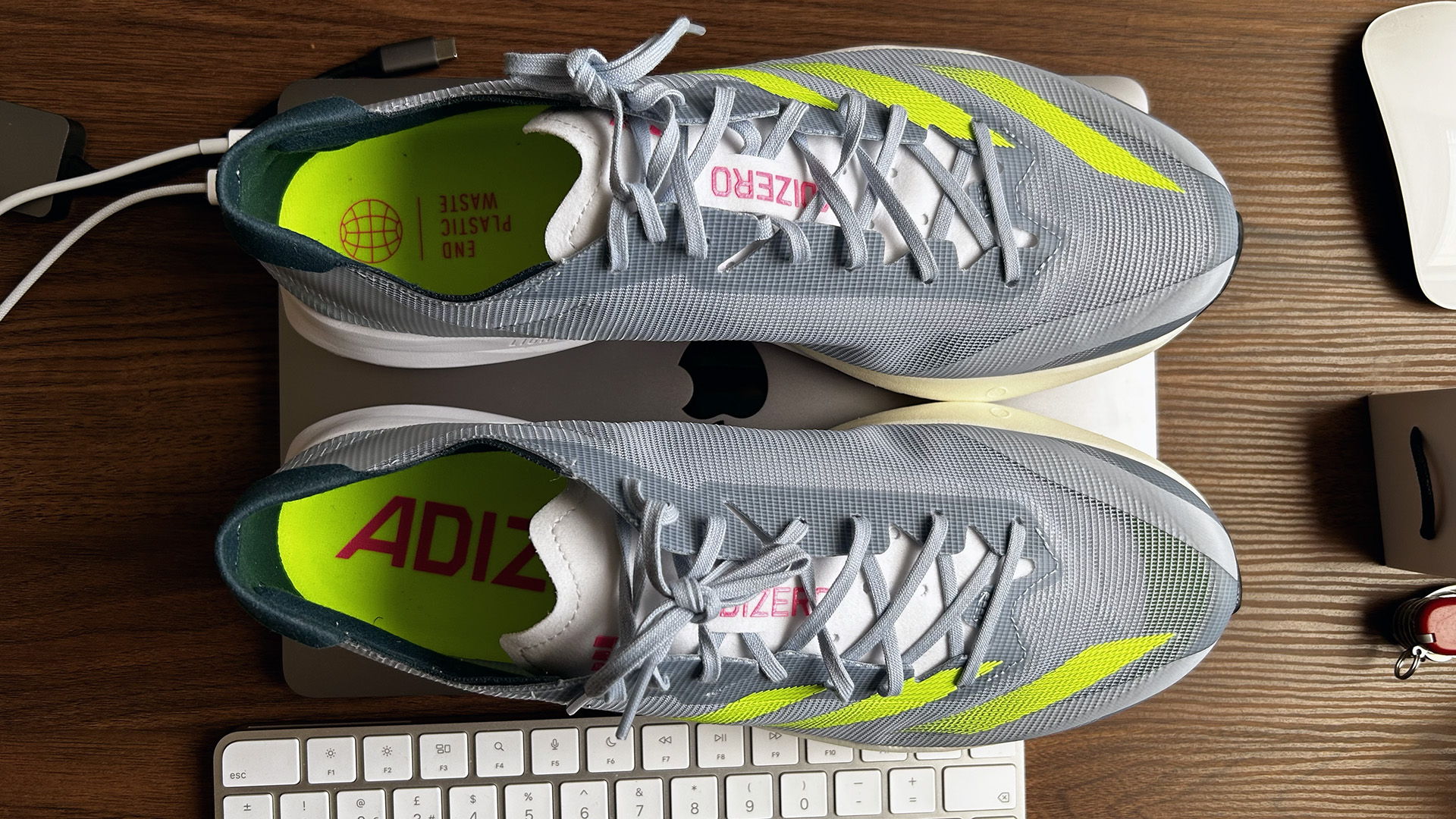

Specifications
Reasons to buy
Reasons to avoid
The Adidas Adizero Adios 8 is not only a mouthful of a name, but also a pair of brilliant shoes ideal for training. You could even use them for racing if you wish, but we recommend this only for runners who know what they're doing and prefer to be more in control of their running style.
Adidas has re-engineered the mesh upper this time round, and while it does provide support in all the right areas, it can make putting them on a bit trickier than we'd like.
Adidas has created a perfect balance of cushioning and responsiveness in use, thanks to a mixture of Lightstrike 2.0 and Lightstrike Pro foams, while the Energytorsion Rod 2.0 system (which now gets a third rod) adds some snap to your toe-offs.
Read our full Adidas Adizero Adios 8 review
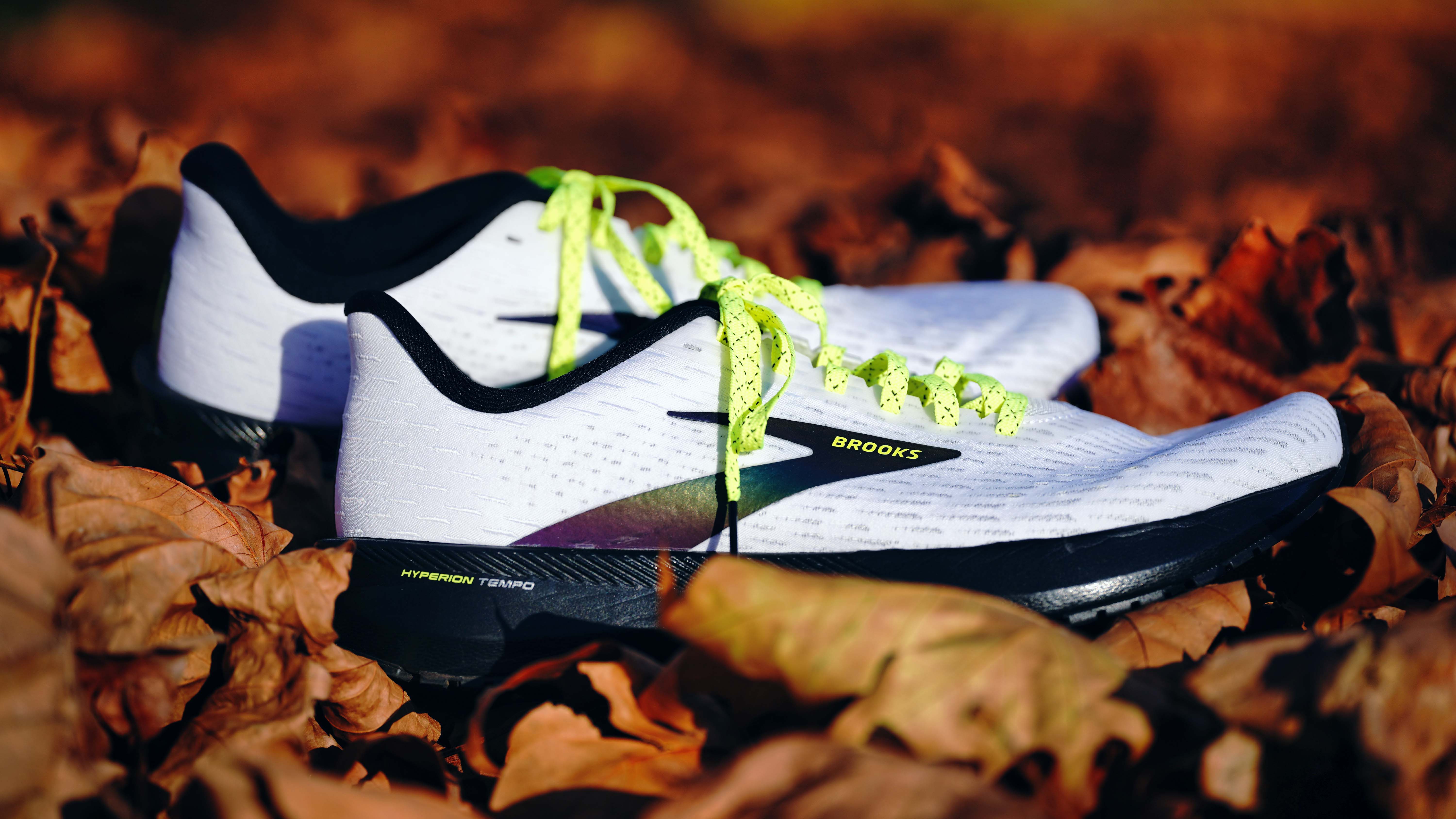

Specifications
Reasons to buy
Reasons to avoid
Brooks Running is a running shoe brand for people who really take their running seriously. Sure, anyone can walk into the store of a larger sportswear brand, but Brooks Running really does put the runner first and foremost.
The Hyperion line of Brooks running shoes has been designed to reduce "deviation from the ideal stride," according to Brooks' Blue Line senior manager Nikhil Jain. The result? Better energy return and less fatigue.
Indeed, from our review we certainly found the Brooks Hyperion Tempo to feel light and responsive. The midsole is springy but not to a degree where it would hinder performance: my best attempt to characterise it would be to call it 'supportive bounce'. The nitrogen-infused DNA Flash midsole reduces impact force and accommodates a smoother transition from heel to toe.
The upper has an excellent fit, not race-tight but not loose, either. The slits at the front of the woven upper allow air to enter, improving overall airflow in the shoes, allowing your feet to breathe. It also helps to reduce swelling during long runs and improve comfort levels in general. A perfect everyday trainer overall.
How does the Hyperion Tempo stack up against the React Infinity Run 2? Find out in our versus article, aptly named Nike React Infinity Run 2 vs Brooks Hyperion Tempo.
Read our full Brooks Hyperion Tempo review
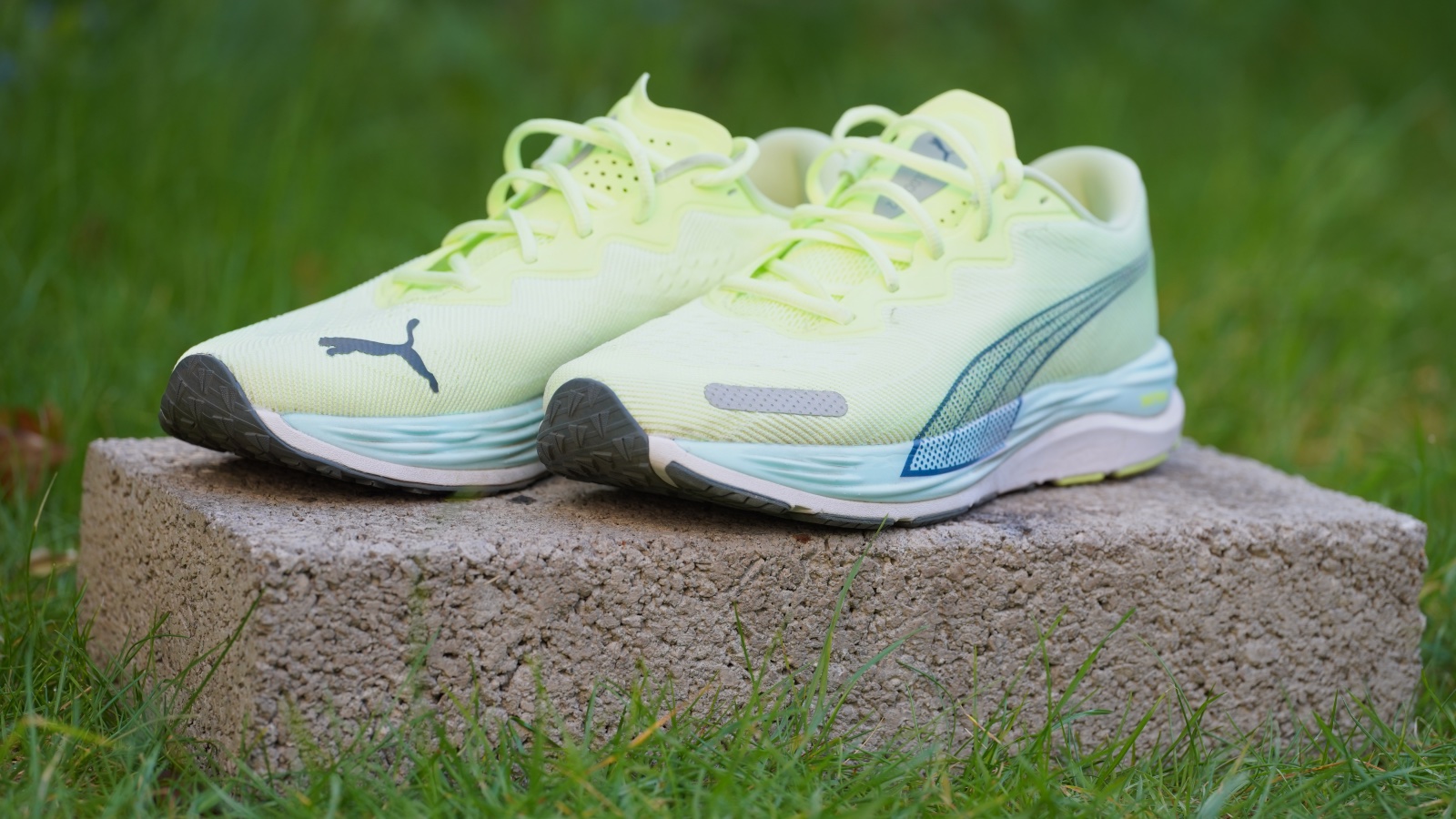
Specifications
Reasons to buy
Reasons to avoid
The Puma Velocity Nitro 2 focuses on comfort and visibility and offers a wealth of great features for an affordable price. There have been some subtle technological updates since the first iteration of the shoes, and Puma has seemingly paid more attention to ironing out the minor issues with ergonomics. Don't fix it if it ain't broke, right?
These running shoes are especially well-suited for low-light conditions as they feature reflective strips in multiple areas. Wearing the Velocity Nitro 2 won't turn your legs into two shining beacons, but motorists will certainly be able to notice you better when you're out and about early morning. You won't beat any PBs in the Velocity Nitro 2, we're sorry to say, as the overly soft nature doesn't provide much in the way of energy return compared to some other shoes on the market. ut for recovery and slower, longer runs, there aren't many shoes we'd recommend more than this one.
Read our full Puma Velocity Nitro 2 review
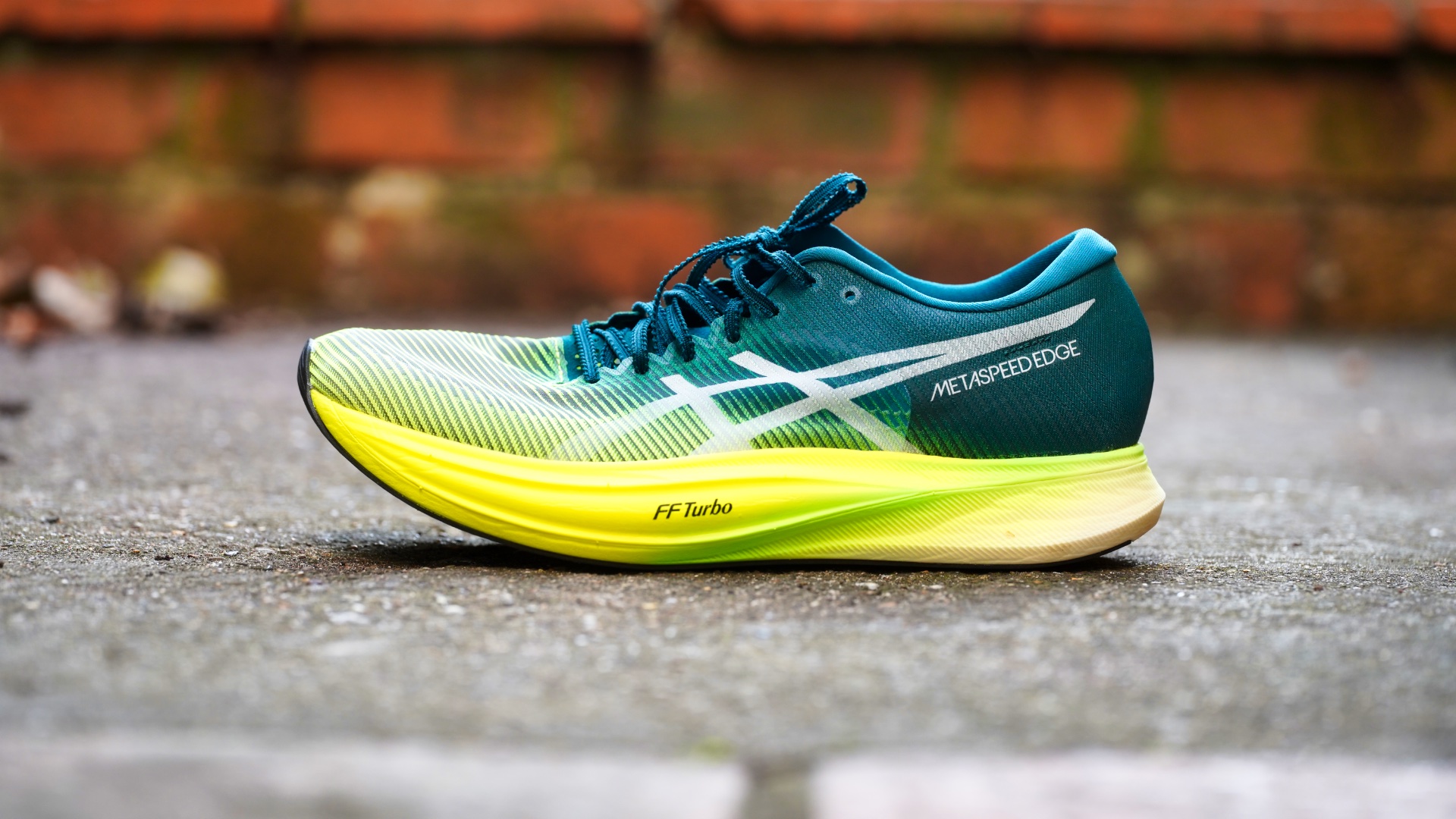
Specifications
Reasons to buy
Reasons to avoid
The ASICS METASPEED EDGE+ has been completely revamped to help cadence-style runners run faster. The shoes have been designed for sub-3-hour marathon runners, but slower runners can also enjoy the speed boost the METASPEED EDGE+ provides.
The increased stack height and the position of the carbon plate make the EDGE+ a competent racing shoe for those who attend races in the hope of beating their PBs over the 26.2-mile distance. Some suggest the EDGE+ is more suited for half-marathon distances, while the SKY+ is best for marathons; it’s probably the same difference unless you’re super fast.
The FF BLAST TUBRO foam is light and responsive, providing excellent energy return at any distance – and now, there is more of it underfoot compared to the EDGE v1. The upper is more comfortable, and the laces have also received minor improvements. Long story short, the ASICS METASPEED EDGE+ is an entirely different shoe than its predecessor but all in the right ways.
Read our full ASICS METASPEED EDGE+ review
Also consider: the ASICS METASPEED SKY+ provides a similar running experience to the Nike Vaporfly, which means the shoes feel less in control than the EDGE+, but in return, you get better bounce and, probably, better energy return over long distances.
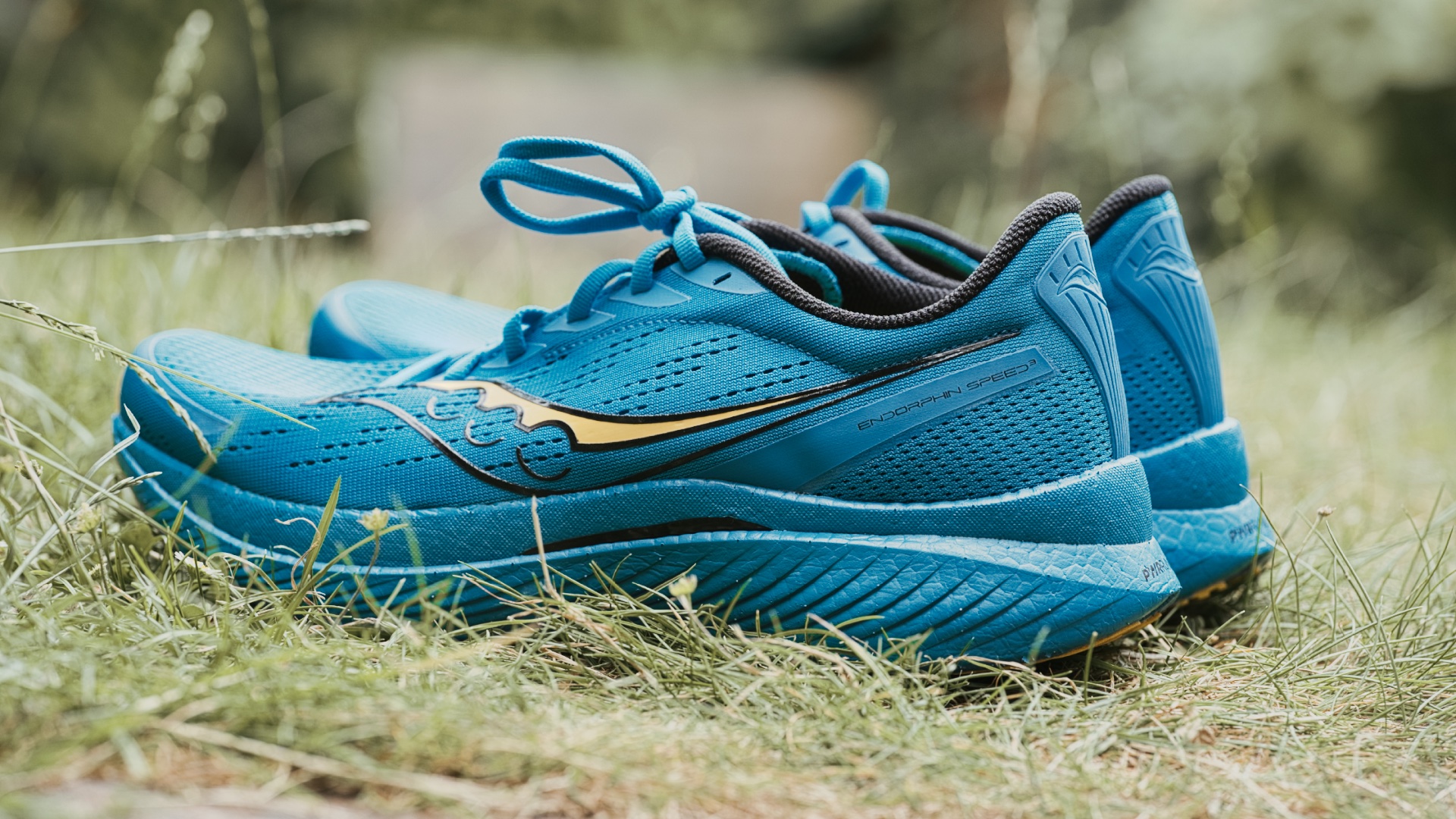

Specifications
Reasons to buy
Reasons to avoid
If you already have the Endorphin Speed 2 and they're in good condition, we’d say don’t worry about upgrading to the Speed 3. If you have the Speed 2, but they're starting to fall apart, getting the Speed 3 would be a good idea (they're only a tad bit more expensive).
But, if you've never tried the Endorphin Speed range at all, the Speed 3 is an excellent entry point to the series; made better by receiving improvements in terms of heel lockdown! The reworked upper is cosy and accommodating without feeling baggy and there is plenty of airflow to keep the temperature as low as possible when you're out and about.
The PWRRUNPB foam remains lovely and soft, helping to preserve the legs, but the nylon plate is not stiff enough to push you forward quite as much as carbon plates. Is this an issue? Not really. The Endorphin Speed 3 is faster than non-plated shoes; it’s just not as fast as stuff like the Nike ZoomX Streakfly or similar tempo trainers.
All in all, the Saucony Endorphin Speed 3 are an excellent pair of running shoes we really recommend you try.
Read our full Saucony Endorphin Speed 3 review
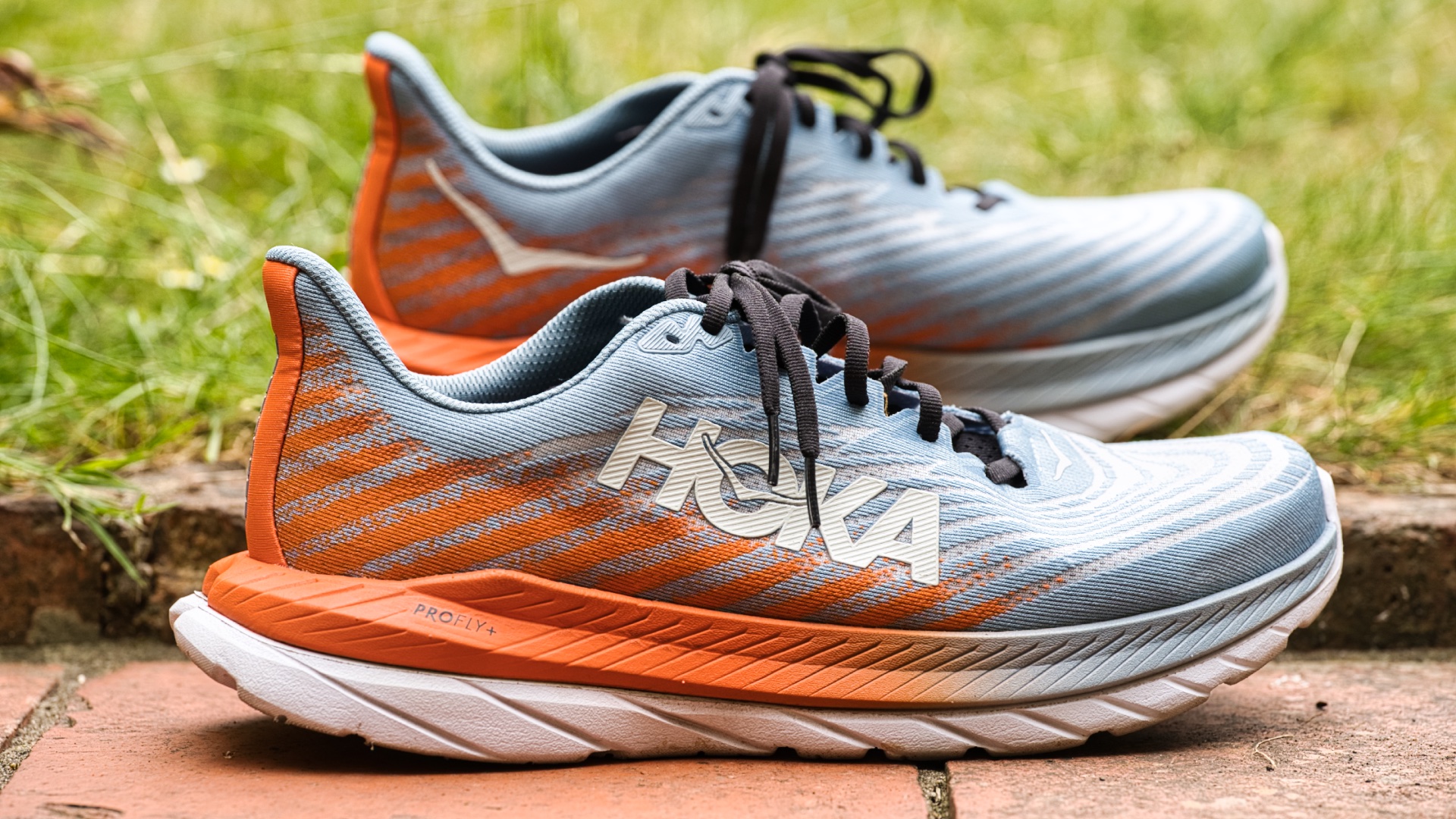

Specifications
Reasons to buy
Reasons to avoid
The Hoka Mach 5 is a testament to the relentless innovation that drives the success of Hoka. There is really nothing to criticise about this latest model, which is an achievement in itself. Shoe updates don't get much better than this.
After the success of the Hoka Mach 4, Hoka could've just kicked back and relaxed for a while and gotten away with only applying minor tweaks to the shoes. Instead, the brand went ahead and released the Mach Supersonic to test the waters with the PROFLY+, then added the new foam in the Hoka Mach 5, reducing the weight and improving the overall running experience.
Thanks to the addition of the new foam and the reworked upper, the Hoka Mach 5 feels very different from its predecessor in a strangely familiar way. You get better energy returns and a smoother ride in a shoe you can use for training and racing – that's as versatile as it gets at this price point. Better still, the Mach 5 is an excellent entry point for newcomers to Hoka!
Read our full Hoka Mach 5 review
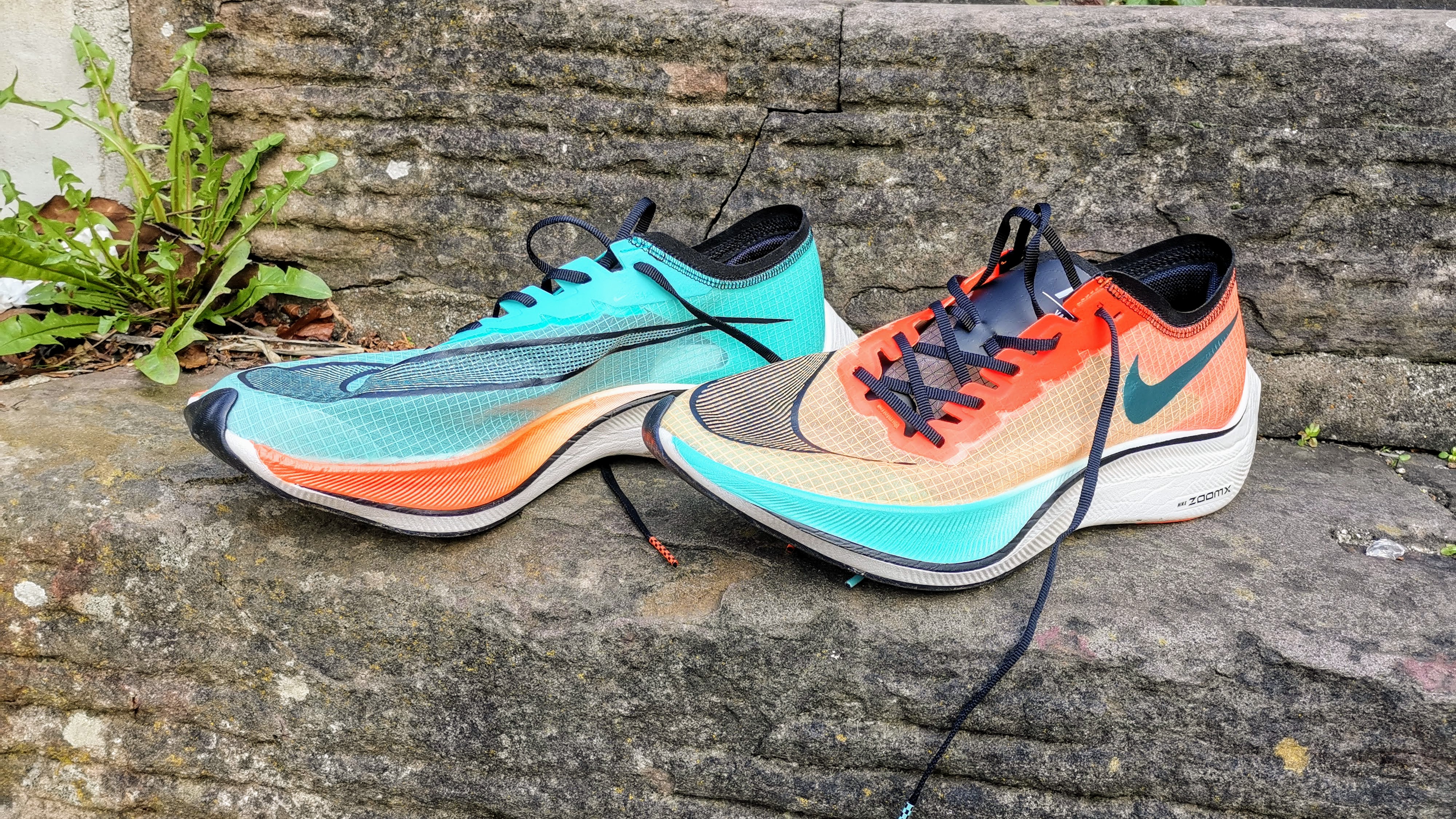

Specifications
Reasons to buy
Reasons to avoid
So, Nike ZoomX Vaporfly NEXT% would normally be higher up our list of the best running shoes but it is so frequently unavailable, and so specifically for racing, that we have moved it down a touch. It is also undeniably weird looking.
The Nike ZoomX Vaporfly Next% is so fast, athletes are lobbying for it to be examined by the International Association of Athletics Federations because they think it provides unfair advantage to athletes who wear them. In the prototype of the successor to the Vaporfly NEXT%, the Nike Air Zoom Alphafly, Eliud Kipchoge broke the two-hour marathon record, previously thought to be impossible to overcome.
What's so good in the Nike ZoomX Vaporfly NEXT%? Nike threw everything it knows about running shoes out of the window when they started designing the Vaporfly series. What they came up with might just be the most peculiar-looking road running shoes in existence, but one that gives runners near perfect running dynamics.
There are three key elements to the design of the Vaporfly NEXT%: the updated ZoomX foam that provides a soft landing without wasting energy on the ground, the full-length carbon plate embedded in the midsole that enables you to turn that landing energy to forward momentum and the VaporWeave upper that helps the shoes fit near perfect on your feet.
You wont wear the Nike ZoomX Vaporfly NEXT% for light afternoon strolls on Park Street, in fact, you will want to wear them only on races – and races that matter, at that. Taking into account that the cushioning won't be able to perform at 100% efficiency forever, you are looking at spending a lot of money for road running shoes you will probably wear a few times a year. My opinion? It's still worth it.
Nike has since released an updated version of this shoe, in the ZoomX Vaporfly Next% 2. We've personally yet to review this updated model, but you can find more information about it here, and buy it from Rebel, here.
Read our full Nike ZoomX Vaporfly NEXT% review
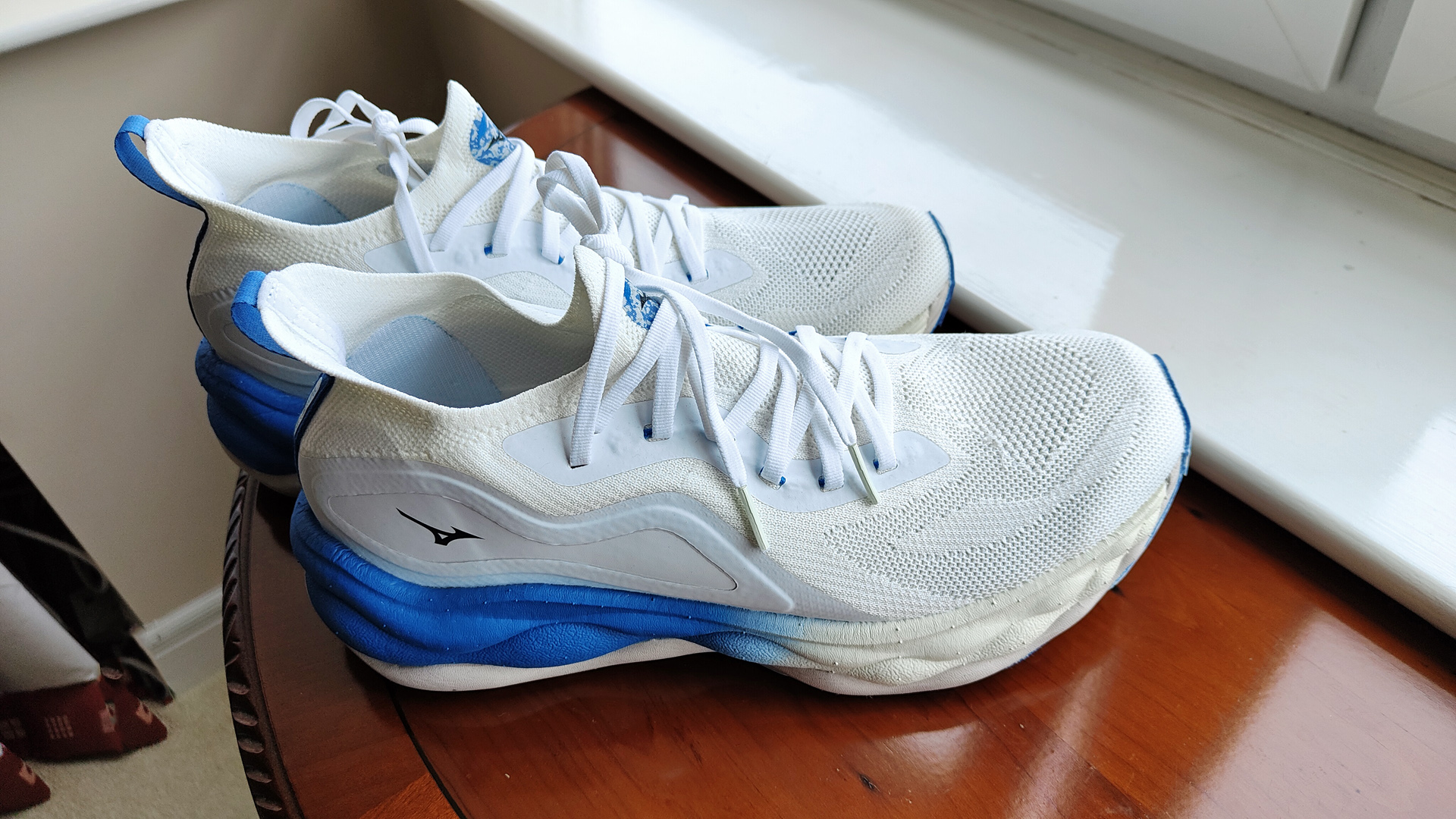
12. Mizuno Wave Neo Ultra
Our expert review:
Specifications
Reasons to buy
Reasons to avoid
Mizuno's Wave Neo Ultra is a sustainable running shoe, and not because it's made of recycled materials, but because for every pair purchased, Mizuno plants two trees to offset the carbon released into the atmosphere during the manufacturing process. In fact, the Wave Ultra's emissions amount to 10.720 kg CO2e, while the two trees lock away 704.36kg CO2e from the atmosphere. That equation looks good to us.
However, the Mizuno Wave Neo Ultra is more than just a sustainable shoe; it's also a decent running shoe, thanks to the Mizuno Energy cushioning system that returns plenty of energy. The Wave Neo is the first to have all three Mizuno Energy materials incorporated into one shoe to create what's called the Mizuno Floating sensation. Indeed, the shoes feel super-soft and well-cushioned.
A slight downside is the price, and although we don't mind paying the premium for such sustainable footwear, it's true that you can get hold of decent max-cushioned daily running trainers for less (just have a look at the many running shoes further up this guide). If you're happy to splash out on the Mizuno Wave Neo Ultra, you can, at least be rest easy in the knowledge you did something to offset the emissions of your hobby – it's something, right?
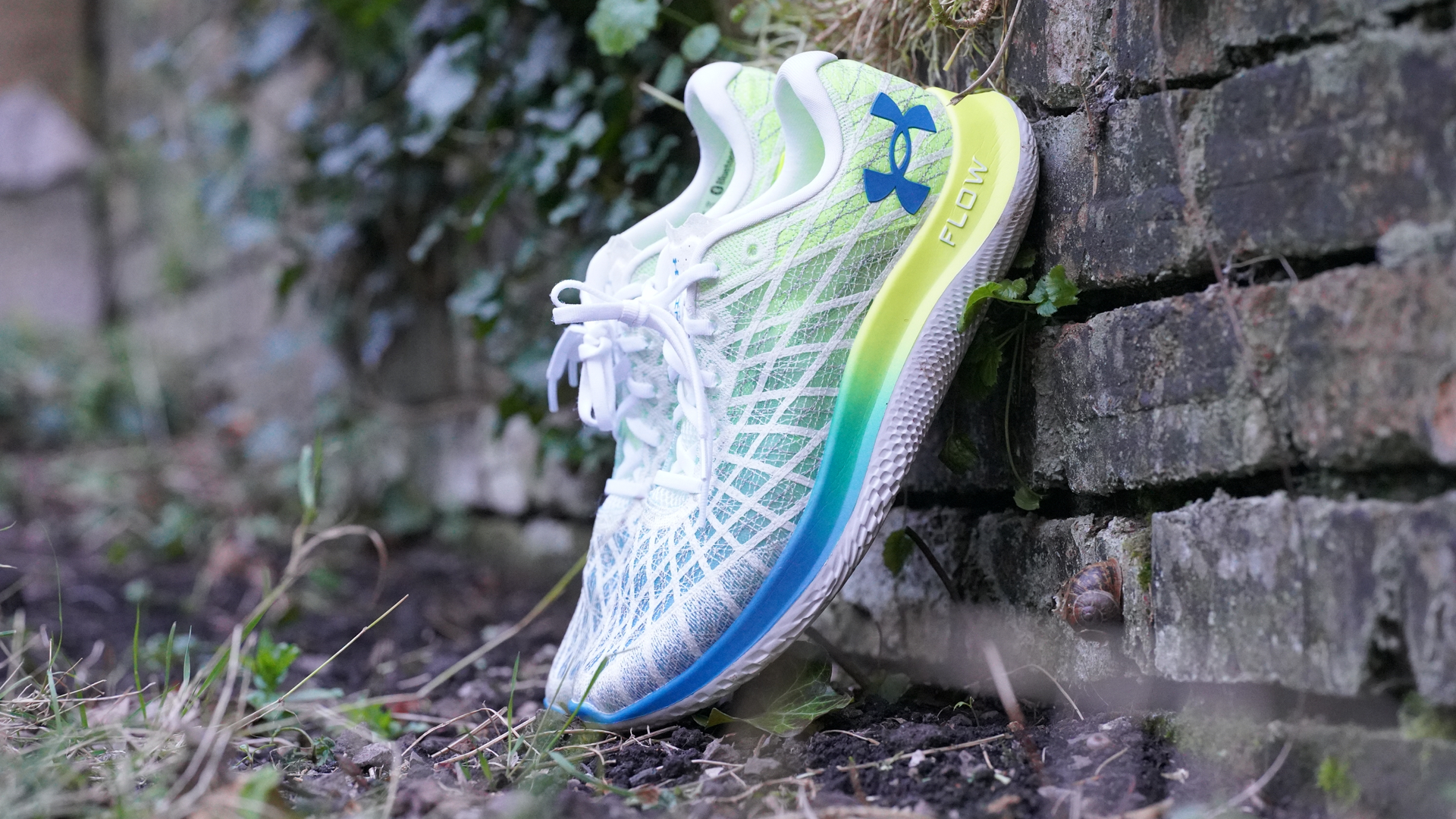

Specifications
Reasons to buy
Reasons to avoid
The Under Armour Flow Velociti Wind 2 is an evolution of the original concept, not a revolution. The Tatami Stitched heel, the new sockliner and the weight reduction all bring minor changes to a running shoe that still offers a firm and light running experience.
The biggest question UA needs to ask itself is who should wear the flow Velociti Wind 2? Is it for racing or fast training? The firmness puts more strain on the legs, so we can safely assume the shoes are not to replace long-distance marathon racing shoes such as the Nike ZoomX Vaporfly NEXT% or the On Cloudboom Echo.
Is it for training? It's a bit too firm for that. Taking this firmness into consideration, I can imagine the Flow Velociti Wind 2 to be eventually touted as a racing flat; all UA has to do is reduce the drop of the shoes, and it's good to go.
The Under Armour Flow Velociti Wind 2 is an excellent running shoe as long as you accept its qualities and approach it with caution. Beginners might find the shoes too firm and tight, but runners who want to move away from the softness will like the Flow Velociti Wind 2.
Read our full Under Armour FLOW Velociti Wind 2 review
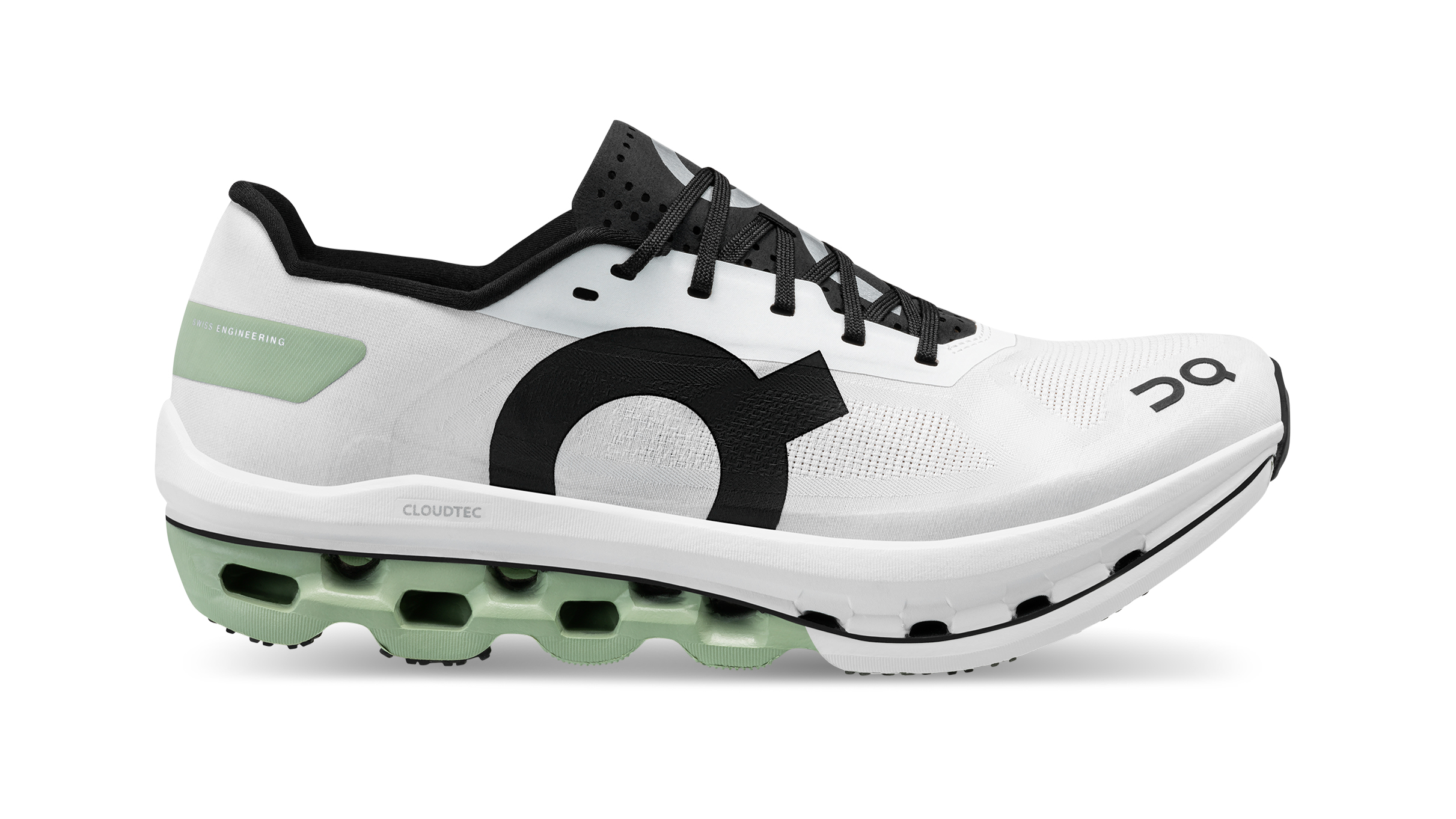

14. On Cloudboom Echo
Our expert review:
Specifications
Reasons to buy
Reasons to avoid
Luckily, On learned from the mistakes of the Cloudboom, and we can see the evidence of this tweaking in the On Cloudboom Echo. It's still firm and tight but doesn't overdo either of these qualities. That said, it's still on the firm side, so if you're not a seasoned runner, running with the Helion 'super foam' might feel uncomfortable at first. Strike that; it will feel uncomfortable at first.
Firmness aside, the On Cloudboom Echo is an excellent racing shoe for those who prefer a stiffer ride. As much as I love soft, high-stack running shoes, running in the Cloudboom Echo felt a little less demanding on the shins as they worked a little on stabilising the legs on landing.
The slight downside of the firmness is that it's hard to utilise the energy return of the Carbon Speedplate, similar to how it's not easy to feel the rebound when running in the also firm Saucony Endorphin Pro. At least the On Cloudboom Echo is a bit more environmentally friendly: the upper is made of 100% recycled material.
Running shoes vs trail running shoes: what's the difference?
For the unacquainted, running shoes and trail running shoes can look pretty similar: similar enough to think they are interchangeable and work well on both the road and the trail. In reality, both types have specific characteristics that make them perfect for the running surface they were designed for and not-so great for others.
Take running trainers for example. These shoes work best when used on hard, smooth surfaces, such as the road: the cushioning is fine tuned to reduce the impact force when landing on tarmac and the upper is tight to keep the foot 'locked in' as you run. The 'stack-height' of most running shoes is also higher, especially nowadays, to improve energy returns. The outsole also tend to be smoother to increase the surface area of the shoes for better grip.
On the other hand, trail running shoes thrive on uneven surfaces. Off-road shoes have massive lugs on the outsole to claw into soft surfaces (e.g. mud, grass) and usually also have an insert in the midsole to protect the feet from rocks and other unexpected obstructions (this insert is aptly named 'rock-shield'). And since the trail is more often slippery and wet than the road, trail shoes have better weather protection and are also heavier in general than road shoes.
To provide an analogue, road shoes are racing cars with their light chassis and fast ergonomics, while trail shoes are 4x4s: robust and heavy but will keep you safe in the forest. Before you buy new running shoes, take into consideration where will you use them the most to avoid disappointment (and injuries) later on.
How to choose the best running shoes for you
With so many different type of running shoes available to buy, it's not wonder one can feel completely overwhelmed just by thinking about getting a new running trainer. To make a decision at least a little bit easier, we collected a few pointers that might help you when buying a new pair of shoes.
Have your gait analysed: you can do this in a brick and mortar running shoes shop or work it out yourself by performing the classic 'stepping on a piece of paper with wet feet' test. There is also the NURVV running insole that can tell you exactly how much you pronate.
Be mindful of sizing: not all running shoes sizes created equal. Some brands are infamous for their sizing methods, for example, New Balance shoes tend to be half a size under, so if you wear a size 10 normally, you might want to get a size 10.5 New Balance. Also, racing shoes are usually tighter than trainers. The best women's running shoes may also be narrower and lighter than unisex or men's options.
Take the running surface into account: obviously, you need different shoes for tarmac and for the trail. That said, some shoes will perform good on all sorts of terrain, such as the Nike Air Zoom Pegasus 36 Trail, while other will excel on one more thn on the other.
Go the distance (or not): if you prefer shorter distances (5K-10K), you won't need industrial amounts of cushioning under your feet feet. For mid-distances (10K-half marathon), you might want to think about having some more support and a stronger upper to keep your feet in line when your form falls apart at mile 19. As for long distances (anything over a half-marathon distance), you want a running shoes that has great energy returns yet a lightweight and responsive. Like the ASICS Metaracer.
Have a purpose in mind: there is no point getting a Nike Vaporfly if you don't race and it is equally as silly to get a Brooks Glycerin for high-performance runs. It you're planning on having only one pair of running shoes, make sure you keep in mind the main principle you will use them for and make a purchase accordingly.
Use running shoes for running: it is tempting to have just one pair of shoes for road running, trail running and workouts. We recommend using the appropriate shoes for all occasions. The best trail running shoes will protect your feet when running on uneven terrain while the best workout shoes will provide grip and stability in the gym.
The best running shoes in Australia: FAQ
What are the benefits of running?
Getting fit is a goal for so many of us, and running has been the number one way to do that for aeons. Establishing a good running habit has benefits far and wide. It is great for losing belly fat, as well as boosting metabolism.
What is runner's high?
The ‘runner’s high’ is a real thing and getting a serotonin kick from exercise has proven to be the easiest way to improve your mood, or pull yourself out of a slump.
Why are running shoes important?
Whether you're running on concrete roads and pavements, or on muddy and grassy trails, running shoes are essential to not only protect your feet, but your whole body. Not only do running shoes prevent your feet becoming swarmed with blisters, but they can help to minimise or prevent damage to your ankles and knees, by effectively absorbing the shock from each stride.
Get all the latest news, reviews, deals and buying guides on gorgeous tech, home and active products from the T3 experts

Matt Kollat is a journalist and content creator who works for T3.com and its magazine counterpart as an Active Editor. His areas of expertise include wearables, drones, fitness equipment, nutrition and outdoor gear. He joined T3 in 2019. His byline appears in several publications, including Techradar and Fit&Well, and more. Matt also collaborated with other content creators (e.g. Garage Gym Reviews) and judged many awards, such as the European Specialist Sports Nutrition Alliance's ESSNawards. When he isn't working out, running or cycling, you'll find him roaming the countryside and trying out new podcasting and content creation equipment.
- Max LangridgeStaff Writer

